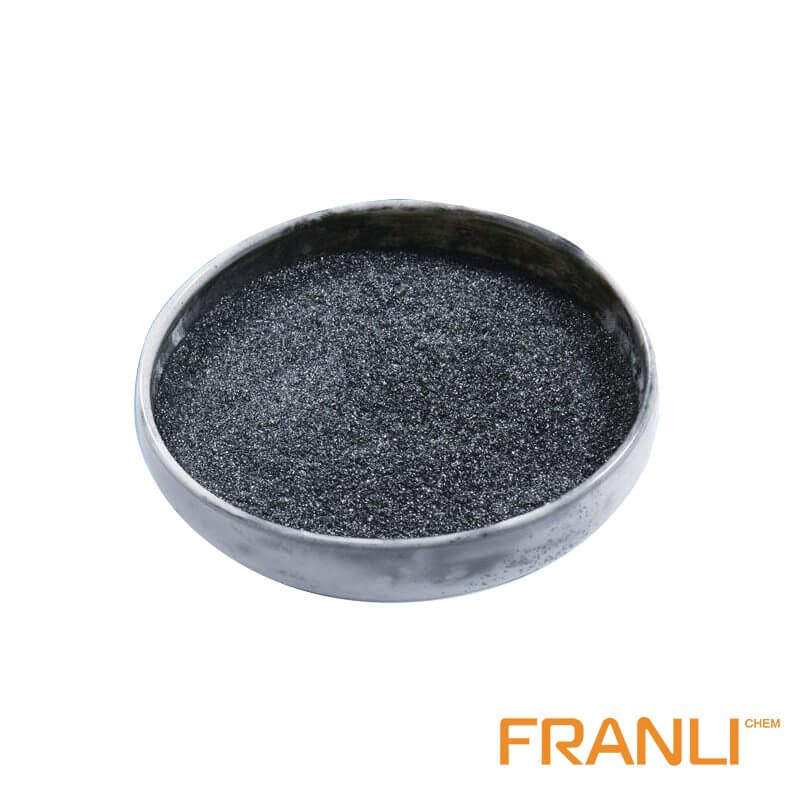

Carbon Graphite
Size
0.01mm
Carbon Content
99%min
Package
25kg small bags into ton bags or ton bags
Features
Good thermal and electrical conductivity, grey-black opaque solid
Application
For mechanical seals, battery manufacturing, anti-corrosion products, carbon graphite electrodes, etc.
Carbon graphite can be used to produce refractory materials, conductive materials, wear-resistant materials, lubricants, high-temperature sealing materials, corrosion-resistant materials, thermal insulation materials, adsorption materials, friction materials and radiation protection materials, etc. These materials are widely used in electromechanical brush and seal etc.
Request a quoteCarbon graphite has a very wide range of applications and has many advantages in the machinery industry. The use of carbon graphite materials is of course directly related to the quality of the product. However, the rational selection of product models is also an important issue related to whether the long-term operation of the equipment can be guaranteed. It is suitable for sealing friction on various types of machinery, guide rings for compressors, piston rings, shielded motors, submersible motor thrust bearings and guide bearings, vacuum pump blades and flow instrument bearings, etc.

Physical properties of carbon graphite
Carbon graphite material has a series of advantages such as low density, high joint strength, small linear expansion coefficient, good thermal conductivity, self-lubricating, corrosion resistance, high temperature resistance, and machining performance. Generally, the bulk density of carbon-graphite materials is 1.3~1.8/g·cm³, the resistivity is 5~50/μΩ·m, and the thermal conductivity is 116/W·m·K. Mechanical carbon has excellent self-lubricating properties, usually the coefficient of friction (dry friction) is 0.08 to 0.1, and only 0.05 when used in liquid media. In the atmosphere, the edge of the carbon material graphite crystallite can absorb more water vapor, ammonia, etc., and promote its self-lubrication. However, at high altitudes and in the absence of gas, the use of pure carbon materials is not ideal, and the wear rate is significantly increased. Different additives must be added to meet the use requirements.
Chemical properties of carbon graphite
Carbon graphite materials have stable chemical properties and are resistant to acid, alkali, salt and organic solvent corrosion, except for a few strong oxidizing acids (such as nitric acid, concentrated hot sulfuric acid, concentrated high chromic acid, and double itch water). When carbon graphite pores are impregnated with resin, metal and other materials, it becomes impermeable graphite, and its comprehensive performance depends on the type of impregnation. Generally, graphite impregnated with phenolic has strong corrosion resistance and is said to solve more than 95% of corrosion problems.
The unique process of carbon graphite
The traditional production process of carbon-graphite materials is similar to that of powder metallurgy and ceramic materials, mainly including mixing, molding, roasting, graphitization, impregnation and other processes (see the accompanying drawings). That is, after mixing coke, natural graphite, carbon black and other powders with binder pitch, it is molded, isostatically pressed or extruded into a predetermined block shape, and then baked at about 1300 ° C to form. Graphitization and impregnation are unique processes for producing carbon-graphite materials. Graphitization is to put the calcined products into a special furnace and energize to raise the temperature to 2600-3000°C, so that coke crystallites are transformed into graphite polycrystalline structures; Various substances are immersed in the porous carbon body under a certain temperature and pressure, making it impermeable.

The use temperature of carbon graphite
Carbon graphite material starts to oxidize at 400°C in the air, and can be used for a long time at -200~1000C in a reducing atmosphere. In order to meet the needs of various mechanical conditions, the Franli factory has no other substances for pure carbon graphite sealing materials, due to the consideration of To meet the requirements of mechanical strength, wear resistance and impermeability of products, resin, metal or other inorganic materials are used to impregnate pure carbon graphite products. Therefore, when selecting the product model, it is necessary to consider not only the temperature tolerance of the carbon graphite material, but also the service temperature limit of the impregnating material.
Practice has proved that when the temperature is in the range of -103~225C, epoxy resin-impregnated carbon graphite products can be used, and when the temperature is 0~150C, epoxy resin-impregnated electrochemical graphite products can be used (the electrical performance of epoxy resin requires that the operating temperature is not greater than 180°C).
Carbon graphite is the raw material of mechanical parts. In the same equipment, the parts used are different, and the conditions are quite different. When selecting products, they should be different. In the double-end mechanical seal, the working conditions of the medium end and the clean water end are quite different. In the re-shielded motor and submersible pump, the lower thrust bearing is much more loaded than the upper thrust bearing and guide bearing, especially This is especially true for submersible pumps with high lift.
Recently, the Franli factory has combined domestic and foreign related carbon graphite materials to produce carbon graphite of various meshes using carbon raw material production processes. The thermal stability of the carbon-graphite impermeable dipping tube impregnated with resin is greatly improved, and the coefficient of linear expansion is greatly reduced. Reliable to use.



